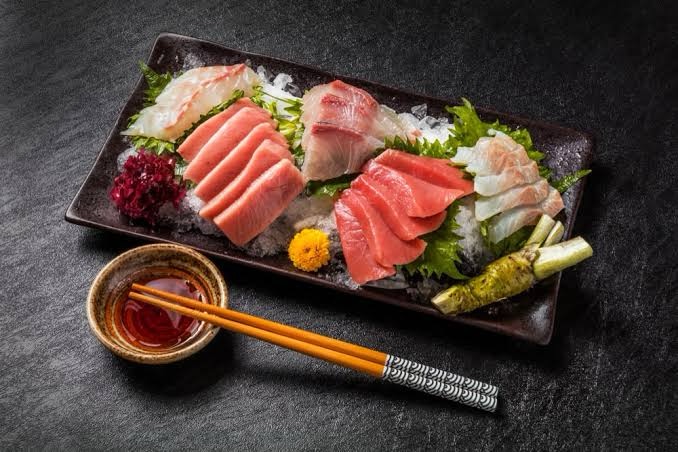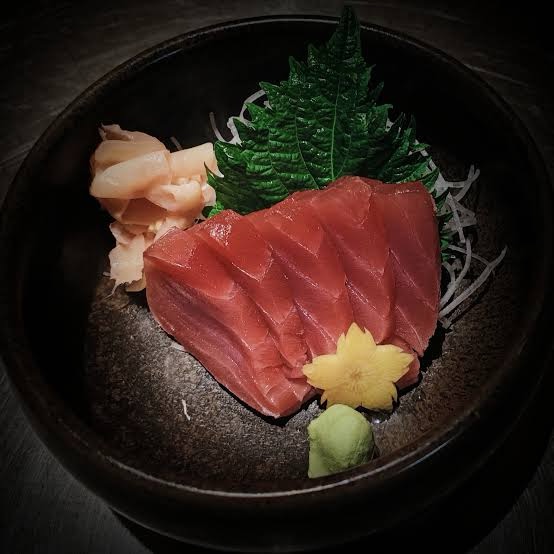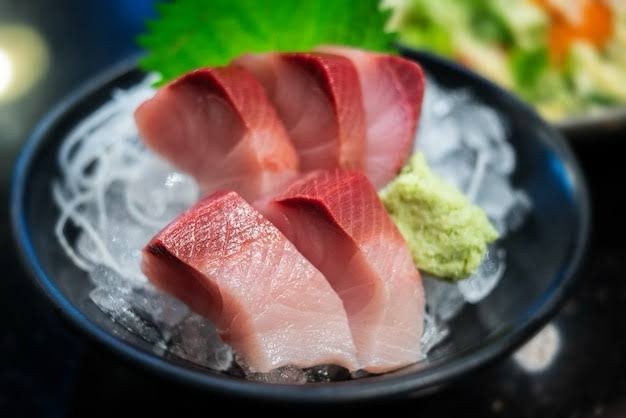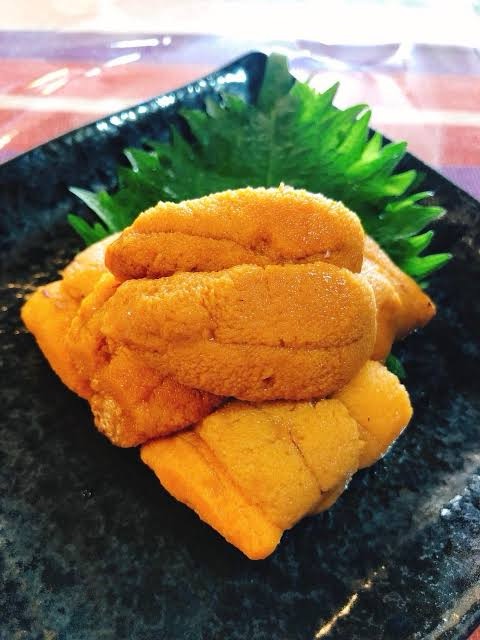Few dishes in Japanese cuisine are as culturally significant and popular as sushi and sashimi. These delicious masterpieces, produced with precision and grace, are the pinnacle of culinary talent and tradition. Join us on a culinary trip as we decipher the complexities of sushi and sashimi, learn how to taste them gracefully, and discover some of Japan’s most popular types.
Understanding sushi and sashimi:
Sushi and sashimi may appear similar at first glance, however they are distinct foods with specific features:
Sushi:

Sushi are bite-sized morsels of vinegared rice served with a variety of toppings such as fish, veggies, or eggs. It can be presented in a variety of ways, including nigiri (hand-pressed sushi), maki (rolled sushi), and temaki.
Sashimi:

Sashimi is a dish of thinly sliced raw fish or shellfish served without rice. It is frequently served with soy sauce, wasabi (Japanese horseradish), and pickled ginger to enhance its flavors.
How to eat sushi and sashimi:
Eating sushi and sashimi is an art form in itself, necessitating mindfulness and respect for the materials. Here are some pointers on how to savor these treats like a true connoisseur:
1. Use chopsticks
Chopsticks are commonly used for eating sushi and sashimi. If you don’t feel comfortable using chopsticks, you can eat nigiri sushi with your fingers.
2. Dip Wisely
When eating sushi, dip the fish side (not the rice) into a small amount of soy sauce and wasabi. Dip each sashimi piece lightly in soy sauce before eating.
3. Take One Bite
Sushi is normally supposed to be eaten in one bite, so try to eat it all at one sitting to really appreciate the balance of flavors and textures.
4. Savor the Moment
Take your time enjoying the delicate flavors and textures of each piece of sushi or sashimi. Allow the components to linger on your taste before proceeding to the next bite.
Popular Varieties of Sushi and Sashimi:
1. Maguro (Tuna):

Maguro is one of the most popular fish used in sushi and sashimi. It comes in a variety of cuts, including akami (lean), chutoro (medium-fatty), and otoro (fatty), each with its own distinct flavor and texture.
2. Sake (salmon):

Sake, or salmon, is another common ingredient in sushi and sashimi. It has a creamy, buttery flavor and a vivid orange hue that pleases the senses.
3. Hamachi (Yellowtail):

Hamachi, also known as yellowtail, is prized for its sensitive flesh and subtle flavor. It is frequently served as nigiri sushi or sashimi, highlighting its melt-in-the-mouth softness.
4. Ebi (Shrimp):

Ebi, or shrimp, is a traditional element in sushi and sashimi. It can be served raw as sashimi or cooked and served as nigiri sushi, with a sweet and delicious flavour.
5. Uni (sea urchin):

Uni, or sea urchin, is a delicacy known for its creamy texture and saline flavor. It is often served as nigiri sushi, allowing guests to experience its distinct flavor.
Conclusion:
Finally, sushi and sashimi are more than just dishes; they represent Japanese culture, craftsmanship, and culinary brilliance. Whether you’re relishing the buttery richness of otoro or the delicate sweetness of amaebi, each bite of sushi and sashimi takes you on a journey of flavors and textures that delight the senses. So, the next time you eat these legendary delights, remember to enjoy the moment, appreciate the creativity behind each dish, and immerse yourself in the rich tapestry of Japanese cuisine.
